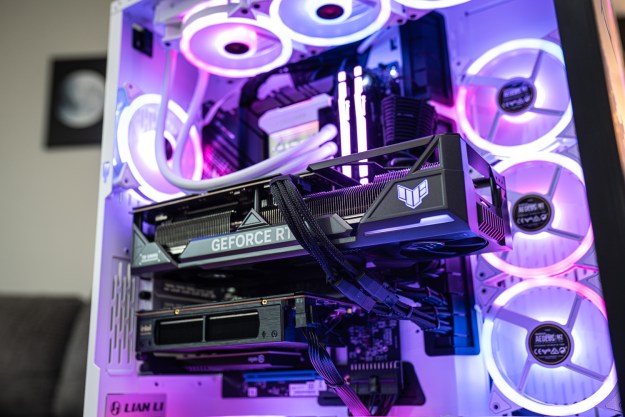
Destiny is going to draw so many comparisons once people start to play it. It’s like Halo. No, it’s like Borderlands. No, it’s like Diablo meets Defiance, with a dash of S.T.A.L.K.E.R. thrown in. In truth, it’s all of these things, and also none of them. Destiny is Bungie’s first non-Halo game in more than 10 years. The mobility, the speed and in-the-moment tactility of it all immediately summons to mind the genre-defining series that the studio kicked off in 2001.
Halo: Combat Evolved informed nearly every one of the games that Destiny feels spiritually connected to, but there is depth here unlike anything Master Chief has ever known. Even from the cramped confines of Bungie’s closed alpha (which we spent a couple of days tooling around in), it’s clear that this is a big game in every sense: in scope and in scale, in depth, in detail, and perhaps most importantly, in ambition. Its heart may beat to the rhythm of Halo, but its soul is rooted in gaming’s connected future.
Story/Concept
The future end of the world. Destiny is set hundreds of years into our future. At one point, humanity was spread out across the solar system in numerous colonies, but an apocalyptic event known as “the Collapse” wiped them all out, leaving the only remaining survivors back on Earth. We were saved by “the Traveller,” a white orb in the sky that, at one point in the distant past, helped the human race reach the stars for the first time.

The game opens after the Collapse, with humans having discovered that former colonies throughout the solar system are now inhabited by a hostile alien presence. Operating out of Earth’s last remaining city, the so-called “Guardians of the City” work to learn more about these threats and defuse them in one way or another. That’s who we all play as: Guardians.
Alpha state. For Bungie’s closed alpha, play is limited to just a handful of locations, almost all of them on Earth. There’s one story mission, one “Explore” mission set in a large, open space filled with enemies and repeatable missions, and one, co-op-focused “Strike” mission. There’s also the Crucible, Destiny‘s PvP zone, where you can play Control (essentially Call of Duty’s flag-capture Domination) against other Guardians.
The alpha limits progression to character levels 4-8 for all three classes — Titans (warriors), Hunters (rogues), and Warlocks (magic-users) — so it’s ultimately little more than a taste of what the early game feels like.
Gameplay
Jump, shoot, explore. While the story and Strike missions in the alpha provide a sense of what the more structured side of Destiny feels like, it’s exploration zones like the one set in Earth’s “Old Russia” that we suspect will take up much of players’ time. The size of even the one environment featured so far is staggeringly massive (and free of load screens), with multiple indoor locations and snaking underground tunnel networks brimming with emergent play opportunities.
Exploration is an absolute blast when you first set foot in Old Russia. The large space is easily navigable with your speeder bike mount summonable from virtually anywhere with the press of a button (though a snaking end-to-end run still likely takes upwards of 10 minutes). Even the simple act of cruising around is pleasing, with the tight controls you’d expect from a team that’s been building vehicle-laden shooters for most of its life.

Massively improved multiplayer. The illusion of a living world wears thin as you explore, as you realize there are fixed respawn locations and mob sizes/makeups for your enemies. It’s one of many trappings that feel wholesale lifted from the traditional MMORPG template. This isn’t a bad thing, given the sheer amount of real estate even one exploration zone puts in front of you. And if it fuels the grind in the later game — something we’re still unclear on — then it serves its purpose.
You can simply wander the landscape, taking on foes as they spawn and teaming up with any fellow players you might happen upon, or you can interact with flashing green beacons to receive simple, repeatable missions. While we didn’t encounter any that set forth a task to “kill X enemies,” many fell in MMO-y that vein. Instead of slaying or collecting a certain number of things, you’re doing that until a meter fills up. Different, but the same.
Destiny also handles the concept of instanced locations in a vaguely familiar manner. A typical MMO features public zones that multiple players carouse in and private instances, which contain anything from story missions to elaborate, late-game raids. In Destiny, it’s just one, big zone that’s public until it isn’t. Start a story mission and you’ll land in an open-to-all exploration area, but cross the threshold into a room or region that features a specific story event — again, a load-free event — and you’ll effectively disappear from the public zone as you step into your own instance.
The key draw here is the seamlessness. There’s no wait time, just an instantaneous transition from the public party to a private showdown. Then there are group events in the public areas — involving anything from defending a fixed location to destroying a giant spider-tank-thing — to help keep things social while exploring. These play hooks weave in and out of each other gracefully, strengthening the overall experience. Only PvP feels separate, confined to it’s own, load-required “planet”.

Tower of power. Separate from both Earth and the PvP Crucible is the Tower, which — yet another MMO standby — is your hub for all shops and social links. It’s not nearly as sprawling as the alpha’s lone exploration zone, but it’s filled with points of interest that hint at Destiny‘s long game.
Like exploration zones, the Tower is a social space where other players are running around as well. Weapons are non-functional here and everyone is forced into a third-person perspective (presumably to help players see past the crowds that inevitably gather in front of merchants). You can trade in collected resources for tokens that pay for select high-level gear, do business with the War Cult, accept bounty contracts, and visit the Cryptarch to identify gear with unknown stats, among other things.
Presentation
Apocalyptic playground. The sprawling environments in even just the one explore zone are packed with details in a way that imbues every new vista with a sense of mystery. From rusted out, teetering spires to long-undisturbed aircraft graveyards and dark rooms deep underground where monstrous high-level creatures lurk, there’s a sense of place that’s separate from any written out plot.
It doesn’t feel like a world you can necessarily influence — again, that MMO spirit — but it is a convincing place that you can exist in and learn from. If the rest of the exploration environments in Destiny are as rich with detail as this first one, we’re going to have a whole lot of game to explore come September.
Takeaway
As first looks go, Bungie’s Destiny alpha qualifies as a worthy introduction, a tiny-yet-flavorful taste of what appears to be a much deeper and more rewarding long game. For all the comparisons that are sure to follow it, the only one that really sticks is the most general of the bunch. Destiny is a massively multiplayer role-playing game, one that seems poised to re-envision just what is possible within the genre.


